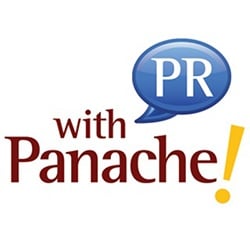12 word description of app/product:
TypeTastic School Edition is a gamified K-12 keyboarding curriculum.
Formats:
Website
Website:
What does it help with?
TypeTastic School Edition helps students progress from identifying letters all the way to proper touch-typing technique.
What grade and age range?
K-12
Is this core/supplemental/special needs/extracurricular/professional development or what?
Core
What subject, topic, what standards is it mapped to?
In the Common Core standards, keyboarding is linked to English Language Arts/Writing.
What lesson time does it use?
Lesson time can be adjusted from 10 to 45 minutes, depending on the unit.
What is the pricing model?
TypeTastic for Homeshools (up to 5 students) is $59 per year.
TypeTastic for Classrooms (up to 40 students) is $99 per year.
TypeTastic School Edition starts from $249 per year for 60 students. (The price is calculated per student.)
Are there services around it?
No.
What makes TypeTastic unique?
With TypeTastic, even preschoolers can learn the keyboard and build their confidence by starting with keyboarding games that help to recognize the letters, locate the keys on the keyboard, and build motor skills before moving on to practice touch-typing. The games provide students a fun way to master a gradual progression to touch-typing.
A description of the characteristics--how is it designed for user interface, user experience? What instructional design principles are at work here?
Students are automatically directed to pick the unit they should start with when they first log in. Teachers can also control which unit is shown to students. TypeTastic remembers the activity users were working on during the previous session and shows them where to start each new session.
All units provide a gradual progression depending on the student’s skill level. In early learning units, users can proceed to the next level or continue practicing on lower levels. TypeTastic offers two versions of its Touch-Typing unit: an easier version for grades 3–6 offers with shorter words and sentences than the unit for middle-schoolers and high-schoolers. Both units follow the same logic: Two new keys are introduced in each lesson, followed by word drill, sentence drill, paragraph drill, and a skills test at the end of the lesson.
Recognizing the keyboard is an integral part of keyboarding, and TypeTastic introduces users to two different kinds of keyboards. In early learning games, the keyboard is divided into nine color-coded sections, which help kids to build the keyboard and memorize the location of the keys.
When they move on to build motor skills and learn touch-typing, the original FingerPaths™ keyboard is color-coded for each finger (purple = pinky finger, green = ring finger, red = middle finger, blue = index finger). The FingerPaths keyboard also guides users which finger to use by creating a color-coded group of keys surrounding each home row anchor key.
Teacher reviews:
Bethany Nill, technology teacher at Mid Rivers Elementary in Saint Peters, MO:
“I use TypeTastic with my K-2 students, and there’s no doubt the gamification of learning a new skill works. With my kindergartners, (and even some 1st-graders) I start off with Keyboard Builder, Cupcake Bugs, and Frog Pond Patrol. These games strengthen students’ mouse skills, while also introducing them to the layout of the keyboard. These games are building their letter recognition skills and helping them to understand the concept that the keyboard has its own specific layout.
The beauty of TypeTastic’s differentiated nature is that my kiddos who are still developing the dexterity to touch-type can still be working on their typing skills, while my kids who are ready for keyboarding are able to continue practicing their technique. Each kid is able to self-evaluate, giving them the power to move to a game that matches their ability level while meeting the objective for that day.”
Kelly Rotzinger, kindergarten teacher at Marion E. Cahlan Elementary School in North Las Vegas:
“Learning to type is easy with TypeTastic! Beginners start by getting familiar with the keyboard and learning key locations by using their mouse (or a touchscreen). From here, one-finger typing is introduced, leading into more complex scenarios.
The games not only help students learn important computer skills like operating the keyboard and mouse, but they also reinforce alphabet and letter-identifying skills. This is especially important for our ELL students—56% of students at our school are either Spanish-speaking or from another country.
…there are people who assume that kindergarten is too young to teach typing skills. However, I think this assumption underestimates these young learners! They are at an age when their curiosity is at its strongest. Everything is new and exciting, and they will try anything as long as you make it fun. With typing being such a fundamental skill in our increasingly digital world, I’m so glad I’ve found a tool to help my students get a head start in this arena!”


